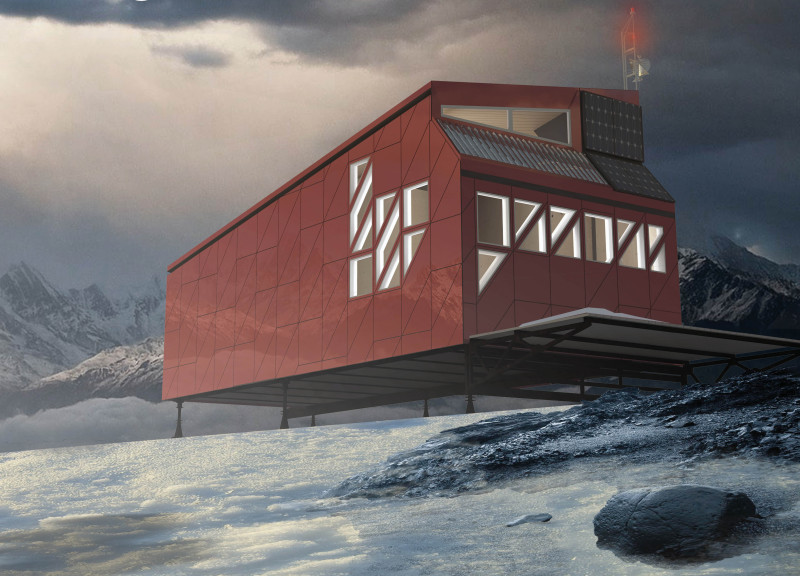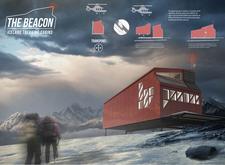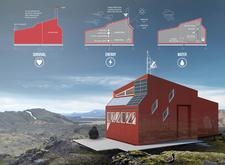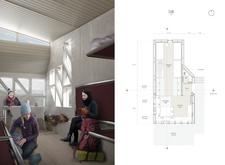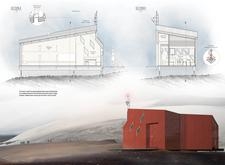5 key facts about this project
## Overview
Located in the Icelandic wilderness, the Beacon is designed to serve as a refuge for trekkers within the region's stark landscapes. With a focus on functionality and sustainability, the structure aims to provide a safe and comfortable environment for visitors engaging in outdoor adventures, particularly in remote areas where accessibility is challenging. The design incorporates modular elements to facilitate efficient transport and assembly, addressing the practicalities of construction in such locations.
### User-Centric Design
The interior spaces are tailored to meet the needs of trekkers, featuring sleeping areas, social interaction zones, and necessary amenities crucial for extended stays in wilderness settings. The common area encourages community engagement among guests, providing an opportunity for connection during their excursions. Flexibility is further emphasized through multifunctional spaces that include pull-down bunks and an extendable table, enhancing usability in various scenarios.
### Material Selection and Sustainability
The design utilizes a range of materials chosen for both durability and functionality. Aluminum panels form the façade, offering lightweight protection against the harsh environmental elements. Polyurethane insulation ensures thermal resistance, maintaining comfort in extreme temperatures, while plywood veneer on interior surfaces adds warmth. Incorporating glass in operable windows maximizes natural light and offers panoramic views of the surroundings.
In pursuit of sustainability, the Beacon features a hybrid energy system equipped with solar panels and wind turbines optimized for the local climate, providing a reliable energy source. Additionally, a water collection and filtration system contribute to its self-sufficient infrastructure, further emphasizing the project’s ecological considerations. The distinctive red exterior serves both an aesthetic function and as a safety feature, enhancing visibility during adverse weather conditions.


